FASTFOOT® COMMERCIAL PROJECTS
Fastfoot® Commercial Pads
This 140,000 square foot warehouse expansion in Kitimat, BC used Fastfoot® for the footing pads. The steel structure required 145 footings, with aluminum cladding used for the building envelope.
Western Industrial Contractors (WIC), one of BC's largest contractors, was responsible for the foundation and steel structure. WIC offers a complete range of construction services, including project evaluation, cost and schedule analysis, evaluation of construction methods, and manpower and equipment planning. WIC is known for 'design-build' construction and encourages Site Managers to innovate with cost effective solutions.
The picture below shows one of the eight larger footing pads 55'-9' long, 36' wide and 3'-6" deep. These large pads reflect the high snow loads which occur in this northern city located on the Pacific Ocean. Wind and seismic loading were also incorporated into the design as shown by the column steel reinforcing protruding from the pads.

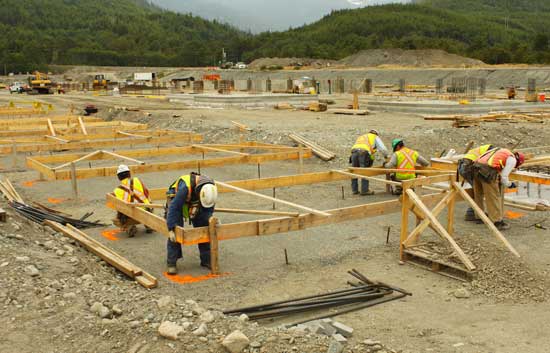
Smaller Pads
Workers set up 2x8 screed boards for the 137 smaller pads, each measuring 20' long, 10'-5" wide and 20" tall. A single top rail was located at the exact height of the footing pad, making concrete screeding very easy.
Plywood forms require screeding inside the form, making accurate finishing more difficult and requiring more labor.
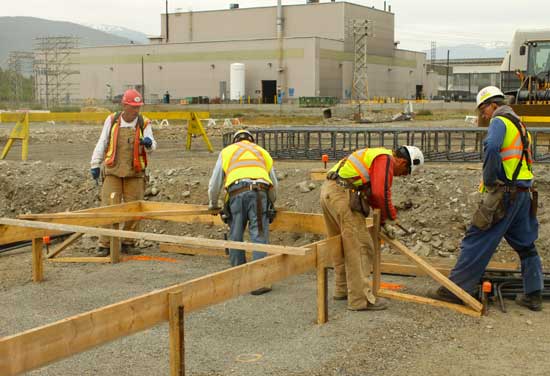
Compacted Ground
"It was impossible to drive 2x4 stakes into the ground", said Al MacFarlane, WIC Project Manager. "We first drove steel stakes and then nail attached them to the 2x4 upright."

Attaching Fastfoot®
Fastfoot® is attached to the top of the screed board using a hammer tacker with 3/8" staples. Installation is fast and clean. A single roll of Fastfoot® weighs 14 pounds and replaces 900 pounds of 3/4" plywood.
"Worker safety is very important to WIC", confirmed Al MacFarlane. "Light weight fabric makes a lot of sense - why risk back injury from heavy plywood?"
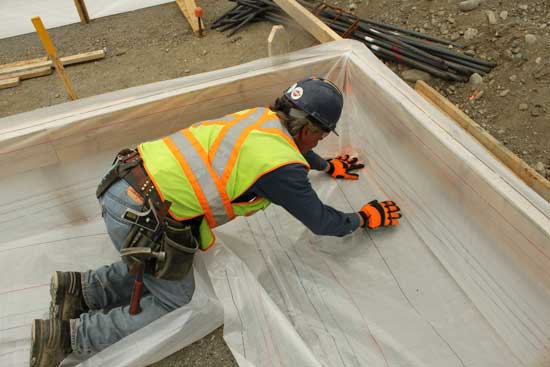
Reduction in Lateral Form Pressure
Lateral pressures are reduced by up to 50% with Fastfoot® compared to plywood as lateral pressures in the bottom of the form are taken by the fabric itself. This reduces bracing costs and installation time.
"We poured in one foot lifts to not exceed the holding capacity of Fastfoot® - even pads 42" high," said Al.
Fabric is folded in corners similar to wrapping gifts. Fabric slack at the base was minimized to reduce concrete bulging.

Site Logistics
One of the advantages of Fastfoot® is that larger sections of the project can be formed and poured at the same time without the limitation of plywood inventory.
The WIC crew enjoy an unusually dry Kitmat day.
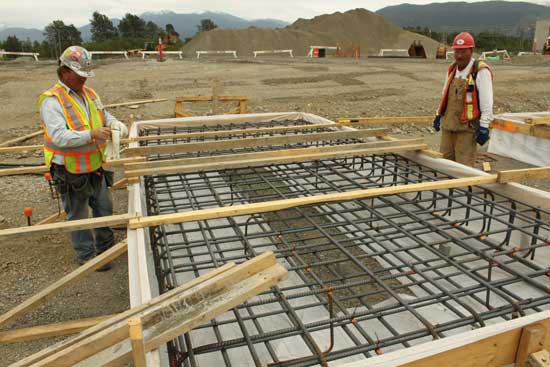
Reinforcing Steel
Fastfoot® does not affect rebar placement.
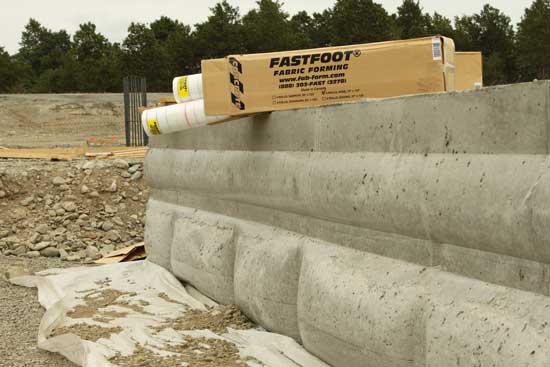
Stripping
As Fastfoot® is a stay-in-place form, stripping and storage costs are reduced dramatically. As well the fabric prevents concrete contamination of the screed boards, uprights and steel stakes.
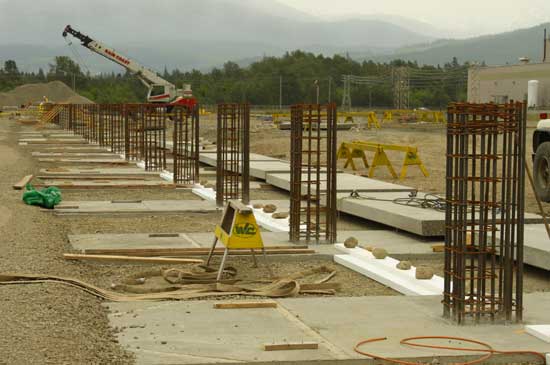
After Backfilling
Ready to form and pour columns.


